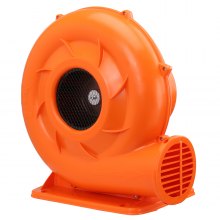VEVOR Air Blowers: Easy Clean, Inflate, And Increase Efficiency
Air blowers are valuable devices for cleaning and inflation purposes. These machines blow air in large quantities and at high speed. There are several types of air blowers, but don't worry. This VEVOR guide will help you explore all the best types and select the perfect option according to your needs. You can shop for affordable VEVOR Air Blowers for convenience.
Understanding Air Blower
An Air Blower is a device that can be used in a lot of applications. These will blow things around, sometimes making fun, or even, among others, make cleaning easier. Follow this article to find the best quality VEVOR Air blowers and learn more about them.
Types Of Air Blowers
The following are the best types of Air Blowers available in the market:
Electric leaf blowers
They are lightweight and have fewer complications when removing leaves and rubbish from homes and gardens.
Handheld Blowers
These compact, portable handheld leaf blowers are ideal for tasks such as light home or car area jobs that may consume less energy.
Industrial Blowers
Durable and long-lasting heavy-duty commercial applications such as cleaning, ventilation systems, and material handling are some of the uses of industrial blowers across diverse industries.
Workshop Blowers
Smaller than those for industries but less powerful; hence helping clean workbenches, tools, and equipment in garages or workshops are these workshop blowers.
Inflatable Blowers
The purpose of these is to inflate swimming pools, mattresses, or bouncy castles that have different sizes and power outputs.
Choosing The Right Air Blower
Note down the following factors and choose the suitable air blower:
Power Output
This indicates how strong the blower is, which means that large CFM values are good for complex tasks, whereas low CFM ones are only enough for light dusting.
Air Speed
MPH (miles per hour) measures how fast or slow air flows from a leaf blower. For instance, higher speeds are more effective whenever stubborn debris removal is required.
Weight And Portability
Make sure to consider its weight as well as size if you plan on constantly moving the tool. The absence of cords enhances mobility.
Noise Level
Because they tend to be very loud when they run, one may consider noise reduction capabilities, mainly if they are used in residential places.
Versatility
Some models also act as vacuums that can collect leaves hence being more convenient compared to those without this feature.
Price
Therefore, before making a choice, decide how much you are willing to spend on it and compare its features across different brands.
Why VEVOR Air Blowers Are The Best?
VEVOR Air blowers are best because they provide the following advantages:
Robust Performance
Our air blowers have high flow rates at powerful velocities, making them effective in handling tough cleaning jobs. Poor air circulation should no longer be an issue for you.
Multitasking
Among other things, VEVOR blowers can also work as vacuums or leaf gatherers, making them more convenient. Our air blowers are designed for multitasking. You can use them for multiple tasks without being worried.
Light Weight
Our lightweight design can be used in various ways, so you do not have to worry about moving around with it. VEVOR blowers are easy to carry or move around the working area. No need to worry about the portability of an air blower
Noise-Free Working
VEVOR blowers work and operate without creating high noise. Our air blowers provide conformability to the customers.
Recommendations And Testimonials
Following are VEVOR's top recommended air blowers:
VEVOR Air Blower 450W
VEVOR Air Blower 450W is the best blower for small- to medium-sized inflatables. Its small size and silence still perform well, which is good at home or parties. For quick and easy inflation, trust in this reliable air blower.
Testimonial: Great product or the buyer was able to continue with the party plans as the jumper was blowing correctly again. Lolita
VEVOR Inflatable Blower 950W
VEVOR Inflatable Blower 950W is a workhorse that powers more giant inflatables. It is an industrial-grade blower that has power control settings and simple, durable controls. This high-quality blower has faster inflation times and consistent performance.
Testimonial: I bought an inflatable water slide for my kids, and this blower is excellent! It works great for our bouncy house. Marion Lee Geary
FAQs
How Strong Should An Air Blower Be?
That depends on what you want it for. Small blowers are used for sweeping light stuff, while big ones are used for dealing with wet leaves or heavy debris.
Can I Use An Air Blower Inside A House?
Yes, but you need to be cautious because indoor air tends to be dry, stirring up dust on your household items. Some have vacuum settings for cleanup purposes. For proper ventilation, always ensure there is enough fresh air coming in at all times.
How Do I Maintain My Air Blower?
Frequently clean the blower's inlet and outlet to avoid blockages. Check if any parts are loose or showing signs of damage. Follow the manufacturer's instructions on care and maintenance.
Which One Is Better, Gas And Electric Air Blowers?
Gas blowers are highly powerful but require fuel and servicing all the time whereas some electric ones might not be as powerful as the former but have less noise and cleaner environments. Think of what you need and prefer.
Conclusion
An air blower can be used in many ways, both at home and in the garden, or even for commercial purposes. There are several different types of VEVOR inflatable blowers that will serve you for a long time and give an excellent performance. Therefore, choose an appropriate model from the selection above to improve your cleaning and meet all your needs as expected. Purchase a VEVOR air blower today and achieve incredible results.

























































































